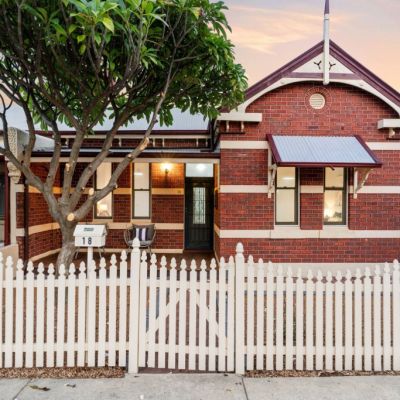‘Sugar hit’: Why the property market just picked up again
Expectations for a February rate cut gave the Australian housing market a boost even before the rates decision, but the pace of growth has slowed in the lead up to the next meeting amid ongoing economic uncertainty and affordability issues.
In the three months to January, national home values slowed as cost of living and sky-high interest rates weighed on prospective buyers. However, this started to reverse in the weeks leading up to the Reserve Bank’s February interest rate decision.

Daily home value index data from Cotality (formerly CoreLogic) showed momentum in the market even slightly ahead of the February meeting. Eliza Owen, Cotality’s head of research, said the movement “may have been tied to expectations of a rate reduction”.
“The values were starting to flatten out. So they were falling, but they weren’t falling as quickly and that was a reflection of value starting to stabilise early to mid-February,” she said.
The Reserve Bank in February cut interest rates for the first time in four years. It kept them steady at 4.1 per cent at the next meeting in April. The RBA’s latest rates announcement will be made next week, with some experts tipping another 0.25 per cent cut.
Aaron Christie-David, the managing director of Atelier Wealth Mortgage Brokers, said as soon there were “murmurs” about rate cuts, clients tended to get in touch about what it meant for their borrowing capacity.
“They’re already baking those numbers in … And it’s almost like a domino effect,” he said.
“So that’s where you probably see that uptick in confidence is now leading to, OK, ‘I’ve got a bit more juice to squeeze’ when it comes to making offers.”
The lower interest rate had given people more confidence, said Christie-David. Still, it was investors or upgraders who were most bullish.
“Especially at this point, first-time buyers are probably sitting on the fence waiting at the moment,” he said, with some wanting to see how Labor’s plans to improve housing affordability play out.
Owen said home values in the most populous cities had a particularly strong reaction after the February rate decision.
“Sydney and Melbourne go from a fairly negative position at the end of last year, to then a bit of a pick-up in the lead-up to the February cut, and then a very strong bounceback,” she said.
“Partly because, for Sydney, it’s a more expensive market, you have higher-end buyers and higher income earners in the city. So a 25-basis-point rate cut for a high-income family means more for borrowing capacity and has the potential to push values up higher.”
For Adelaide, Perth and Brisbane, Owen said home values were “really strong” even when interest rates were rising, and while they may keep rising, “you’d expect them to have a slower pace of growth than what they did last year.”
National home values jumped after the February rate cut and hit a record by March, on Cotality data. But Owen said the pace of increases had since slowed.
“You could categorise it as almost like a bit of a sugar hit,” she said. “So there’s this initial boost to market values that is delivered off the back of a rate cut. But that increase in values can only be sustained if rates continue to come down; otherwise we keep hitting this cap on affordability,” she said.
Market factors, including global economic uncertainty and US President Donald Trump’s tariff moves, were also having an impact, Owen added, putting “some purchasing decisions on ice.”
“It appears as if buyers are holding back a little bit and sellers are holding back a little bit as well. But it’s not necessarily indicative of what will happen if the cash rate is cut in May,” she said.

“I think that if the cash rate is cut in May, you will see another pretty strong and quick market reaction. But it could be that people are actually waiting for the decision itself.”
PEXA Group chief economist Julie Toth said the rate cut had not necessarily translated to a jump in sales yet, with prospective buyers waiting until they were passed through by lenders.
“As well as speculation about more interest rate cuts, we’ve also got the impact there of the federal election being called and held, and that doesn’t affect prices, but it does affect investment activities,” she said. “So we typically see people pause or delay decisions.”
Still, Toth said there was some pent-up demand following the election and the Queensland cyclone.
“We would expect to see a couple of really busy months … as a bit of a catch-up. So that’s in terms of volume,” she said.
“And then we know that buyer demand is incredibly strong, so that does tend to play into further price rises as well.”
We recommend
States
Capital Cities
Capital Cities - Rentals
Popular Areas
Allhomes
More










